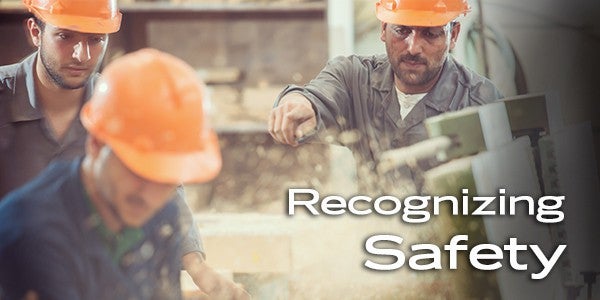February 24, 2020


Safety on a construction site isn’t just a secondary concern to keep an eye on – it’s absolutely essential. Presumably, no one wants to get injured (or worse), but that’s exactly what is risked every time an employee is lax with safety protocols. What can be done to change that indifferent attitude toward safety that can infiltrate a job site?
If you’re looking to change your company’s attitude, here are 4 tips to implement an effective safety program.
1. Commit to Engaging Employees
Having a high level of employee engagement has a ton of benefits no matter what business you’re in. In fact, organizations with high levels of employee engagement show 13% less turnover when compared to companies with lower engagement. They also report 44% higher profits.
Perhaps nowhere is engagement more beneficial than in the realm of safety. Businesses with highly engaged employees had 70% fewer safety incidents than organizations with low engagement.
It clearly makes sense to prioritize employee engagement, but what does that look like on a construction site?
2. Use Recognition to Engage Employees
Recognizing workers for a job well done has been shown to be one of the best ways to engage employees. But it’s important to understand that employers and employees don’t always agree on an adequate level of recognition.
Almost 9 out of 10 businesses said they have a program in place for employee recognition. Yet, a recent study showed that only 40% of employees felt they had been adequately recognized for their efforts by their supervisor.
Companies are clearly thinking about recognizing their employees and investing resources into the practice. But the employees aren’t getting that message. Most still feel like they’re not getting adequately recognized in the workplace.
Why the disconnect?
It likely has a lot to do with the modes of recognition the businesses are practicing. Giving recognition the right way at the right time can make all the difference.
3. Practice the Three A’s for More Effective Recognition
Creating safer environments provides a significant ROI, and this is especially true in a construction environment. If you want to have a culture of safety in your organization and on your job sites, you’ll need to recognize behaviors that drive your safety program.
The Three A’s are Attitudes, Actions, and Achievements. They provide the template for improving your safety performance.
Attitudes
Attitudes lead to actions, which in turn, lead to achievements. You can think of it as a safety pyramid with attitudes forming the base. Examples of safety-conscious attitudes might include: championing the importance of safety on the worksite, encouraging coworkers to use precautions, or being perceptive of opportunities to improve safety conditions.
Typically, it’s best to recognize attitudes in the moment. This can be non-monetary recognition in the form of words of praise, either directly from a supervisor or from a peer. Reinforcing beneficial attitudes should be a daily occurrence. When you recognize desirable attitudes consistently, you lay the groundwork for a culture of safety.
Actions
To recognize actions, you can look for work that is above and beyond the job requirements. For instance:
- Attaining a safety certification
- Completing a safety training
- Attending an optional safety meeting
- Reporting a safety incident
These are just a few examples. You should be able to identify predefined and specific actions that are relevant to your company’s safety goals. It’s important that employees know when they do X or Y, they will receive recognition.
With actions, a tracked points-based system works well to encourage behavior. An employee earns a certain number of points for certain actions, then they can redeem them for merchandise or lifestyle rewards.
Achievements
Achievements are the most challenging to attain. In many safety programs, only about 10-15% of employees will reach this recognition level annually. In effect, achievements are exclusive and significant, meaning it is important to recognize them with a meaningful award. These can be in the form of trophies and plaques, or even award rings or incentive trips.
Achievements occur over time, such as going a calendar year with no injuries or lost time related to injuries. Being recognized for accomplishing these big goals that require consistent effort helps employees stay motivated to continue those correct behaviors and further enforce the desired safety culture.
4. Establish a Proper Safety Program Recognition Framework
Finally, you’ll want to develop an infrastructure and detailed processes for recognizing the attitudes, actions, and achievements that reinforce the safety culture you want to build.
This could be a framework you outline internally or a formal platform that you outsource. It is important to document and promote within your organization. If it’s only talked about and outlined in a few exclusive meetings, but not continually emphasized, it won’t be effective.
An effective framework includes the following steps:
- Defining attitudes, actions, and achievements for recognition
- Developing the process
- Educating Staff and Managers
- Delivering the recognition consistently
- Measuring, reporting, and refining
If you implement those steps, you’ll be well on your way to shaping a safety program that will engage your employees, create a safer and more satisfying work environment, and drive more profits.
About Terryberry: Terryberry provides employee rewards and recognition programs, including safety award programs, for thousands of organizations worldwide.

